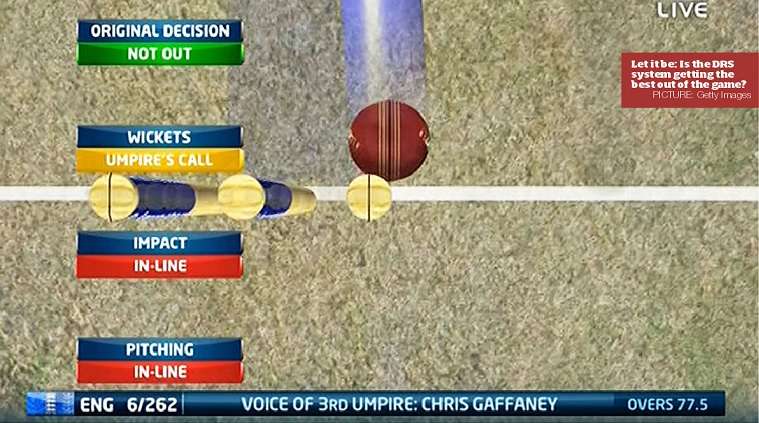The eyes of the cricket world will be on Edinburgh next week, not something you write every day, but, in the case of the continuing debate over the best use of the Umpire’s Decision Review System, undoubtedly true.
And if the noises emanating from the headquarters of the International Cricket Council in advance of their annual conference in the shadow of Arthur’s Seat are anything to go by, prepare for the best news about UDRS since its inception. (Anyone calling out “scrapping it altogether?” it’s the naughty step for you.)
Even before the moment in England’s third Test against Sri Lanka at Lord’s when Jonny Bairstow was allowed to progress from 56 to 167 not out following one of the clearest examples of the most glaring flaw in the system, the “Umpire’s Call” for leg before wicket decisions had been under close scrutiny by the members of the ICC’s cricket committee for some time and for the very good reason that, in its present form, it looks suspiciously like nonsense.
Those who support the existing margin for error which says that, when reviewed by Hawk-Eye, 50 per cent of the ball must be hitting a stump for any on-field lbw decision of not out to be overturned but that, conversely, if the on-field decision is out Hawk-Eye must show the ball to be missing the stumps completely for that call to be overturned, have done so on the basis that the system was set up to ensure only clearly incorrect decisions are reversed.
The problem with that argument is that, since we are repeatedly being reassured that the whizz-bang technology is getting closer to foolproof with every passing T sign, we have been encouraged to believe that the virtual evidence it presents to us is fact.
So when you are shown pictures of one smashing into leg stump in the manner of the delivery from Shaminda Eranga that seemed to have done for Bairstow, it is hard to accept the accompanying explanation that the umpire’s call of not out should be upheld because only 49.99 per cent of the ball would have connected.
Over the years the pain has been particularly hard to bear for bowlers, of course, those who put their heart and soul and, in the case of paceman, body on the line to find a way past Test class batsmen armed with modern bats that, while we are talking percentages, are 99 per cent middle and one per cent edge and often on pitches that form the central plank of the global conspiracy against them.
They have always understood that it takes rather less than 50 per cent of a ball hitting the top of a stump to send it cart-wheeling to the boundary because they’ve seen it and done it.
And their state of mind has not been helped by the fact that, should they fall foul of the 50 per cent rule, they and their side loses a review even when all but the required 0.01 per cent of the ball is shown to be hitting the stump.
India’s skipper MS Dhoni calls the use of this margin for error the Umpire’s Decision Justification System and it is said to be one of the reasons why he his Board still refuse to use DRS in bilateral series.
In the wake of the Bairstow incident, former Sri Lanka captain Mahela Jayawardene, a recent recruit to the ICC cricket committee, disclosed that they had discussed reducing the margin from 50 to 25 per cent and that their recommendation has been put forward for consideration at the conference in Edinburgh.
According to Jayawardene: “Even the MCC rule book says that if the ball hits any part of the wicket it should be given out, so you are going away from all that with the 50 per cent rule.”
Research has shown that cutting that margin in half would increase the number of LBWs going in favour of bowlers by as much as 80 per cent.
So if the protocol was changed it would also be a shot in the arm for those administrators calling for four-day Test matches or, at that rate two-and-a-half. Another debate for another day, I feel.
And there are others who would not be averse to the passing of the umpire’s call altogether, including Jayawardene’s former teammate, Kumar Sangakkara.
“High time the ICC got rid of this umpire’s call, “he said. “If the ball is hitting the stumps it should be out on review, regardless of the umpire’s decision.”
He did, however, accept a margin for error of 20 per cent.
There are many things to admire about the technology that the inventors of Hawk-Eye and Hot Spot have brought to the game. We know because they keep telling us this is so.
The current system of umpire’s call is not one of them, however, and the world of cricket looks to Edinburgh for the start of something better.
This piece originally featured in The Cricket Paper, Friday June 24 2016
Subscribe to the digital edition of The Cricket Paper here















